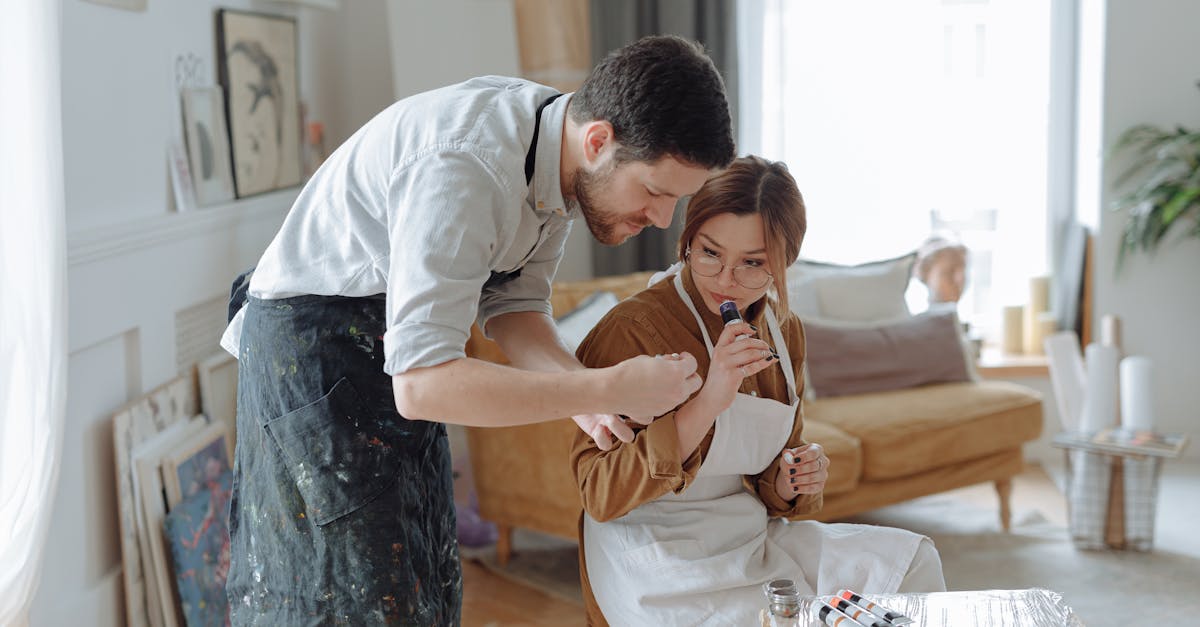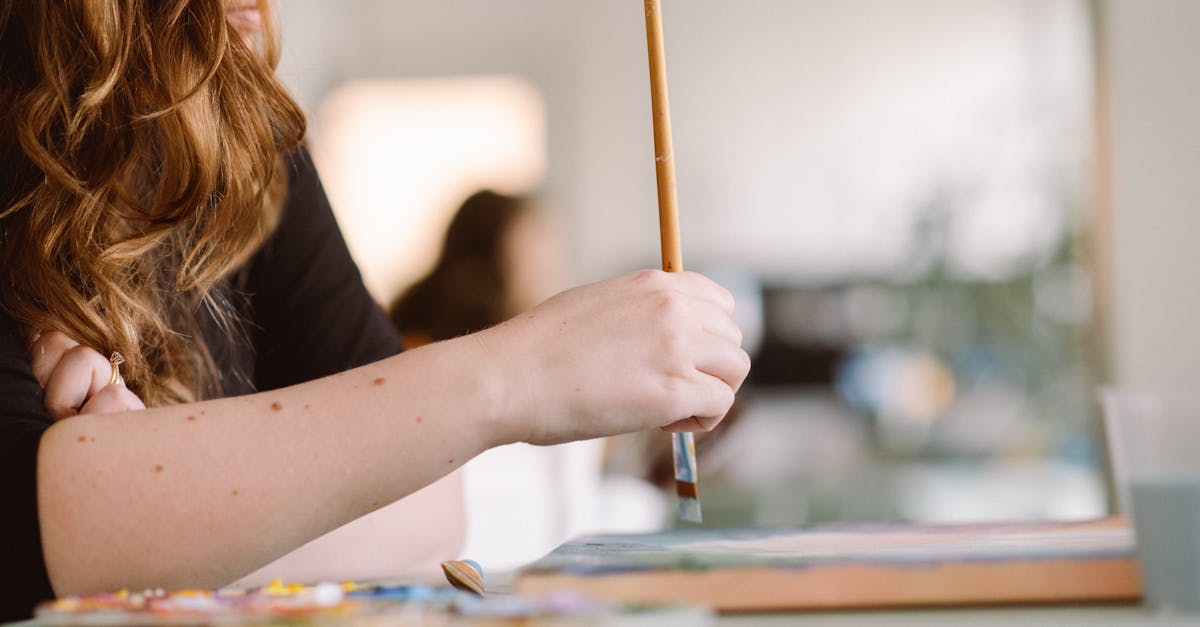This article explores effective painting techniques that can significantly enhance the perception of space in a room. By utilizing light colors, such as soft pastels or whites, the room can appear larger and more inviting. Techniques such as vertical stripes and ombre effects can create an illusion of height, while strategic color placement can add depth and dimension. Additionally, using a glossy finish on walls reflects more light, further amplifying the sense of openness. Essential tips for choosing the right paint finishes and quality materials will also be highlighted, ensuring a professional-looking result.
Current Trends in Home Painting and Remodeling
Homeowners continually seek ways to enhance their living spaces, and painting combined with remodeling has emerged as one of the most transformative approaches. As we embrace modern aesthetics and innovative techniques, it becomes essential to stay updated with current trends in interior painting and home improvement. Whether it’s refreshing a room’s look or completely overhauling the color scheme, understanding the latest styles and techniques can significantly impact your home’s ambiance and value.
From choosing the right color palettes that resonate with contemporary tastes to exploring innovative materials and painting techniques, this article will delve into the must-know elements that define today’s home renovation landscape. Discover how to make effective choices that not only enhance the beauty of your home but also align with your lifestyle needs. By integrating these elements into your remodeling projects, you can create spaces that are both inviting and reflective of your personal style.

| Technique | Description |
|---|---|
| Accent Walls | Using a bold color on one wall creates a focal point and draws the eye, giving the illusion of more space. |
| Light Colors | Opt for light shades like whites, pastels, or soft neutrals to make a room feel larger and more open. |
| Vertical Stripes | Painting vertical stripes adds height to walls, making ceilings feel higher and the room more airy. |
| Monochromatic Palette | Using varying shades of the same color creates a cohesive look that can make a space feel more expansive. |
| Glossy Finishes | High-gloss paints reflect more light, which can help to brighten up a space and create a more open feel. |
| Mirror Effect | Incorporating mirrored or reflective elements along with the paint can amplify natural light and give depth. |
| Open Layout Colors | Using the same color throughout adjacent rooms helps to unify the space and visually connect different areas. |
Current Trends in Painting and House Renovation
Homeowners looking to rejuvenate their spaces are increasingly interested in the latest trends in painting and renovation techniques. Understanding these evolving styles not only helps in crafting beautiful interiors but also ensures that projects align with modern aesthetics and functionality. This guide explores popular colors, innovative materials, and effective painting techniques to help transform any living space.
Popular Color Trends
When it comes to selecting paint colors, current trends emphasize a mix of bold and muted tones to create depth and interest. Below are some popular choices:
- Earthy Tones: Shades of green, terracotta, and beige draw inspiration from nature and promote tranquility. These colors create a warm and inviting atmosphere, perfect for living rooms and bedrooms.
- Bold Accents: While many prefer muted backdrops, adding bold colors like deep blues or vibrant yellows on select walls can create focal points that energize a space.
- Neutrals with Texture: Soft whites and grays provide a contemporary touch, especially when paired with textures such as matte finishes or stenciled patterns that add visual appeal.
Choosing the right color is crucial to achieving the desired mood in any room. Using paint chips allows homeowners to visualize how colors interact with natural light throughout the day.
Innovative Painting Techniques
Painting is not just about applying a coat of color; it’s an art form that can incorporate various techniques to enhance the visual appeal of walls. Below are some trending techniques:
- Wallpaper Paint: Transforming walls with painted wallpaper patterns is gaining popularity. By using stencils or drafting geometric designs, homeowners can achieve a standout look without the commitment of actual wallpaper.
- Dip-Dye Effect: This technique involves blending two colors together, where the base color softly fades into a contrasting hue, creating a whimsical and modern appearance.
- Textured Finishes: From sponge to rag rolling, textured painting offers an artistic flair that can elevate a simple wall. These methods can create depth and interest through variations in light and shadow.
Choosing the Right Materials
With a variety of choices available, selecting the right materials is essential for ensuring durability and beauty in painting projects. Here are some aspects to consider:
Type of Paint
Homeowners must decide whether to use water-based or oil-based paints. Water-based paints are easier to clean and dry quickly, making them ideal for interior spaces, whereas oil-based paints provide a hard finish suitable for high-traffic areas like kitchens and bathrooms.
Finish Options
Paint finishes come in various options, each affecting both appearance and durability. Common finishes include:
- Matte: Offers an elegant finish ideal for adult spaces but may require more maintenance.
- Satin: A versatile finish that strikes a balance between durability and aesthetic appeal, perfect for family rooms.
- Semi-Gloss: Excellent for kitchens and bathrooms due to its washability and resistance to moisture.
- High-Gloss: Reflective and durable, perfect for trim and cabinetry that require a glossy look.
The Importance of Proper Preparation
Preparation is vital in house painting to achieve professional results. Here are some key steps to follow before painting:
- Clearing the Space: Remove furniture and wall art to create a clean work area. Cover remaining items with plastic drop cloths to protect them from paint splashes.
- Cleaning Walls: Wash the walls thoroughly to remove dust and grime, ensuring proper paint adhesion. Using a mild detergent can further enhance the surface prep.
- Applying Primer: Aquality primer enhances paint coverage and color richness. This step is especially important for previously unpainted surfaces or bold color changes.
Green and Sustainable Options
As awareness of environmental responsibility grows, many homeowners opt for eco-friendly materials. Consider using:
- Low or No VOC Paints: These options reduce harmful emissions in the home, making them healthier for both occupants and the environment.
- Recycled Materials: Many manufacturers now offer paints made from recycled materials, providing eco-conscious alternatives without sacrificing quality.
Switching to sustainable products also reflects a modern sensibility, aligning with the values of many homeowners today.
Creative DIY Projects
For those who enjoy hands-on projects, DIY painting can be both rewarding and cost-effective. Here are a few easy ideas:
- Accent Walls: Creating an accent wall can significantly enhance the room’s character. For instance, a bold colored wall behind a bed or couch can serve as a stunning focal point.
- Furniture Redo: Outdoor or indoor furniture can be revitalized with a fresh coat of paint. Using chalk paint facilitates a textured, vintage look, perfect for farmhouse designs.
- Cabinet Updates: Refinishing kitchen or bathroom cabinets can elevate the entire space, adding both value and modernity.
Utilizing the latest trends in painting and renovation can transform a home into a personalized haven. By exploring color palettes, innovative techniques, and sustainable materials, homeowners can create beautiful living spaces that reflect their unique style and meet functional needs.
For further insights on adapting painting trends or understanding the value of art resale for home decor, check out these informative resources: Adaptive Painting Trends and Art Resale Painting Value.

Transform Your Home with Our Expert Painting Services!
Unlock the potential of your living space with our professional painting and remodeling services. Experience unmatched quality, innovative techniques, and a personalized touch that will elevate your home to new heights. Don’t wait any longer—let us help you create the home of your dreams!
Current Trends and Tips in Painting and Home Remodeling
Practical Tips for Painting Your Home
-
Prepare Your Space
Before starting any painting project, ensure the room is cleared of furniture and items. Cover remaining furniture with drop cloths to protect them from paint splatter.
-
Choose the Right Color
Utilize paint chips to visualize your space in different colors. Opt for lighter shades to make a room feel larger and more open, while bold colors can add depth.
-
Invest in Quality Tools
Gather necessary tools such as high-quality paint, rollers, brushes of various sizes, painter’s tape, and drop cloths. Quality tools can significantly improve your painting experience and results.
-
Use Primer
Applying a primer is essential, especially for new walls. It helps in achieving better paint adhesion and reducing the number of paint coats needed.
-
Adopt Proper Techniques
Learn effective painting techniques, such as using a paint roller for large areas and a brush for edges and corners, to ensure even coverage and a professional finish.
-
Clean your Walls
Prior to painting, wash your walls with soapy water to remove dust and grease. This step is critical for ensuring better paint adhesion.
-
Ventilate the Area
Ensure good ventilation while painting to avoid inhaling harmful fumes from the paint. Open windows and use fans to keep air circulating.
Current Trends in Home Painting and Remodeling
-
Bold Accent Walls
Using bold colors for accent walls continues to be a popular trend. This technique adds character and depth to a room, allowing for creativity without overwhelming the space.
-
Eco-Friendly Paints
More homeowners are opting for low or no-VOC (volatile organic compounds) paints to create healthier indoor environments. These eco-friendly options are better for both the planet and personal health.
-
Textured Finishes
Incorporating textured finishes, such as sponging or rag rolling, is gaining popularity. These techniques add unique aesthetic values to walls, providing a more visually appealing outcome.
-
Mixing Finishes
Combining different paint finishes within one space—like matte walls with high-gloss trims—can create a sophisticated and dynamic look that appeals to modern design sensibilities.
Frequently asked questions
Glossary of Key Terms Related to House Painting and Remodeling
- Primer
- A preparatory coat applied to surfaces before painting to improve adhesion and durability of the topcoat.
- Finish
- The sheen or gloss level of paint, which can range from matte to high gloss, affecting the paint’s appearance and durability.
- Paint Types
- Categories of paint based on their base, including water-based, oil-based, and solvent-based, each suitable for different surfaces and finishes.
- Caulk
- A flexible material used to seal joints and gaps in surfaces to prevent moisture and air penetration.
- Drop Cloth
- A protective covering used to shield floors and furniture from paint spills and splatters during a painting project.
- Tape
- Painter’s tape used to mask off areas that should not be painted, helping to achieve clean lines and edges.
- Drying Time
- The period required for paint to dry properly, which can vary based on paint type and environmental conditions.
- Paint Roller
- A tool used for applying paint quickly to large flat surfaces, often featuring a handle and a replaceable, absorbent roller cover.
- Texture
- The finish of a painted surface that can add depth and interest, which can range from smooth to rough or patterned.
- Tools
- Various implements used in the painting process, including brushes, rollers, and trays, essential for achieving different techniques and finishes.
The importance of Painting Techniques to Open Up a Room lies in their power to transform spaces, making them appear larger and more inviting. By carefully selecting colors and employing techniques such as strategic color placement and proper surface preparation, any room can exude a sense of openness and airiness. These methods not only enhance the aesthetic appeal but also elevate the ambiance of a home. It’s time to take the first step towards refreshing and revitalizing your spaces by applying these practical tips for a brighter and more expansive living environment.
Recommendations for Painting Techniques to Open Up a Room
Choose Lighter Colors
Selecting light colors dramatically enhances the perception of space. Lighter hues such as soft whites, pastels, or light grays can make walls seem farther away, thus creating an illusion of a larger area. When planning color schemes, consider painting the ceiling and walls in similar tones to blur lines and extend visual height.
Use an Accent Wall
Incorporating an accent wall can add depth without overwhelming space. Opt for a bold color or pattern on one wall to create focal points while keeping the other walls lighter. This technique draws attention to specific areas and provides a stylish contrast that can invigorate simple rooms.
Experiment with Paint Finishes
The finish of the paint can significantly influence the light reflection in a room. Consider using a semi-gloss or satin finish which reflects light, making walls appear brighter. In contrast, matte finishes absorb light, which may not be ideal for smaller spaces.
Strategic Use of Patterns
Applying textured or striped patterns can elongate walls and create visual intrigue. Here are a few approaches to achieve this:
- Vertical Stripes: Use painter’s tape to create vertical stripes that can lead the eye upward, enhancing perceived height.
- Subtle Textures: Consider using techniques such as sponging or rag rolling that add depth without being overpowering.
- Geometric Patterns: Modern geometric designs can complement contemporary décor while visually expanding space.
Lighting Considerations
Before painting, assess the room’s natural light. Adjust color selections based on how the light interacts with the paint throughout the day. Paint samples on walls and observe them at different times to ensure the chosen color opens up the room effectively.
Transform Your Home Today!
Experience the benefits of professional painting and remodeling services tailored to your needs. Whether you want to refresh your space or completely overhaul it, our expertise guarantees stunning results that enhance your home’s beauty and value. Don’t wait any longer—let us help you create the home of your dreams!
Sophia Torres is the creative mind behind the most dazzling transformations at TS Painting & Restoration. With a strong background in interior design and a deep passion for tropical color palettes, she has helped hundreds of clients revitalize their spaces into vibrant and inviting environments. Born in Colombia and raised in Florida, Sophia brings a unique perspective to her work, blending Latin American influences with modern design trends.
Sophia’s vision of color goes beyond the conventional. She is known for her ability to create bold and unexpected combinations that reflect Florida’s natural beauty. Her focus on color psychology and strategic use of tones allows her to transform any environment, making each project a showcase of her clients’ personal style. On her blog, she shares practical tips on how to choose colors that not only beautify but also enhance emotional well-being and create harmony in the home.
When not working, Sophia enjoys exploring art galleries, experimenting with DIY projects, and finding inspiration in Florida’s lush landscapes. For her, design isn’t just about aesthetics; it’s about creating spaces that tell a story, reflect the identity of those who live there, and evoke positive emotions. At TS Painting & Restoration, Sophia is committed to helping homeowners discover how colors can transform their homes into true havens of tranquility and beauty.


